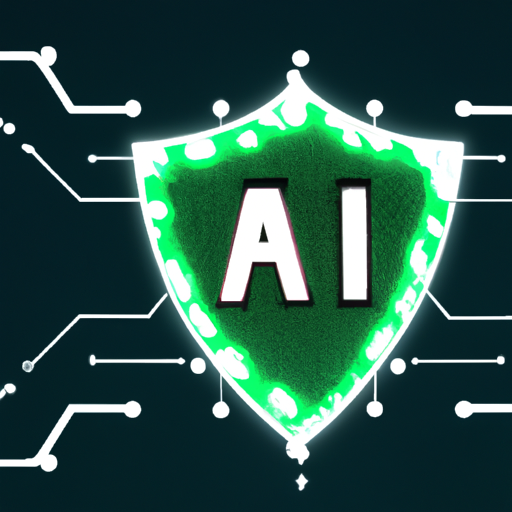Cybersecurity and AI: Protecting your Business in the Digital Era
Introduction
In today's digital era, businesses rely heavily on technology to drive their operations and achieve growth. With the rise of Artificial Intelligence (AI), businesses are experiencing enhanced efficiency, improved decision-making, and increased productivity. However, along with these advancements comes the critical concern of cybersecurity.

The Intersection of AI and Cybersecurity
Artificial Intelligence has the potential to revolutionize cybersecurity, both as a protective measure and as a potential threat. AI can augment human capabilities in identifying and responding to cyber threats by analyzing vast amounts of data, detecting patterns, and automating tasks. On the other hand, cybercriminals are also adopting AI to launch more sophisticated and targeted attacks that traditional security measures may struggle to defend against.
AI for Cybersecurity Defenses
Using AI for cybersecurity defenses can significantly strengthen your business's protection against threats. Here are some important applications of AI in cybersecurity:
1. Threat Detection and Response
- AI algorithms can analyze network and system logs, detect anomalous behavior, and identify potential threats in real time.
- AI systems continuously learn from patterns in user behavior and identify non-compliant activities.
- AI can quickly recognize and neutralize any potential security breaches.
2. Advanced Malware Detection
- Traditional antivirus software often relies on pattern matching to detect known malware.
- AI-powered cybersecurity systems analyze file behaviors, network traffic, and other indicators to identify new and unknown threats.
3. User Authentication and Access Control
- AI can improve user authentication processes such as biometrics, facial recognition, and behavioral analysis.
- AI systems detect suspicious behavior that may indicate unauthorized access attempts or identity theft.
4. Automated Vulnerability Management
- AI can automate the process of scanning networks, systems, and applications for vulnerabilities.
- AI systems prioritize critical vulnerabilities and recommend appropriate mitigation strategies.
Cybersecurity Risks and Challenges with AI
While AI can significantly enhance cybersecurity, it also introduces its own risks and challenges. Here are a few key areas to consider:
1. Adversarial AI
- AI-powered cyber attacks are becoming increasingly sophisticated.
- Adversarial AI can be used to circumvent existing security measures, deceive AI systems, and exploit vulnerabilities.
- Businesses need to be proactive in staying updated on emerging threats and adopting AI defenses capable of countering adversarial attacks.
2. Privacy Concerns
- The utilization of AI often requires collecting and analyzing large amounts of data, including personal and sensitive information.
- Businesses must ensure they handle this data responsibly, adhering to privacy regulations, and implementing robust data protection measures.
3. Bias in AI Systems
- AI algorithms are trained on historical data, which may reflect pre-existing biases.
- Biased AI systems may lead to discriminatory or unfair practices in cybersecurity, such as wrongly flagging certain individuals as threats.
- Regularly assessing and fine-tuning AI systems is crucial to minimizing biases and ensuring fair treatment.
4. Human and Machine Collaboration
- AI should augment human capabilities rather than replace them.
- Human expertise and intuition are essential in cybersecurity for critical thinking and context comprehension.
- Effective collaboration between humans and AI systems is vital to achieving optimal cybersecurity outcomes.
Implementing AI-driven cybersecurity in your Business
Considering the increasing prevalence of cyber threats, integrating AI-driven cybersecurity measures is essential for businesses. Here are some steps to take:
-
Assess your Cybersecurity Strategy
- Conduct a comprehensive assessment of your existing cybersecurity practices.
- Identify vulnerabilities and determine where AI can provide the most significant value.
-
Invest in Robust AI Solutions
- Look for reliable AI-powered cybersecurity solutions that align with your business goals.
- Consider factors such as accuracy, scalability, and compatibility with existing systems.
-
Train Your Employees
- Educate your employees about cybersecurity best practices, AI capabilities, and potential risks.
- Foster a culture of security awareness and ensure everyone understands their role in maintaining a secure environment.
-
Regularly Update and Test
- Stay current with the latest AI and cybersecurity developments.
- Regularly update your systems, apply security patches promptly, and conduct thorough testing to identify vulnerabilities and weak points.
-
Collaborate with Experts
- Partner with AI and cybersecurity experts, both internally and externally, to gain insights.
- Ensure you have the necessary expertise to navigate the evolving landscape of cybersecurity and AI.
Conclusion
In summary, AI offers significant potential in enhancing cybersecurity defenses for businesses. By leveraging AI technologies for threat detection, malware detection, user authentication, and vulnerability management, businesses can stay resilient against evolving cyber threats. However, it's equally important to be mindful of the risks associated with AI, such as adversarial attacks and biases. By adopting a proactive approach, continuously updating defenses, and promoting collaboration between humans and AI systems, business owners can ensure their operations remain secure in the digital era.